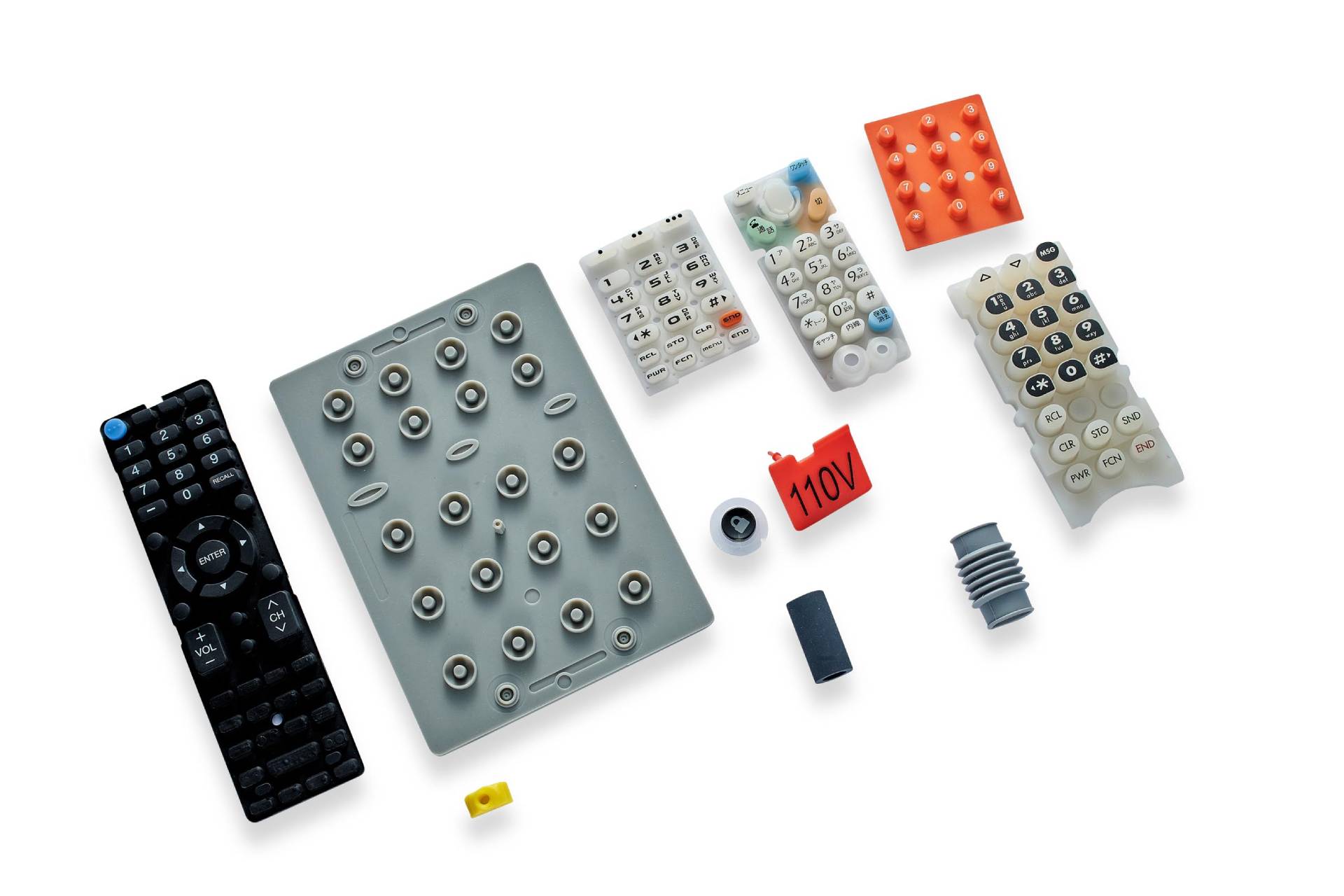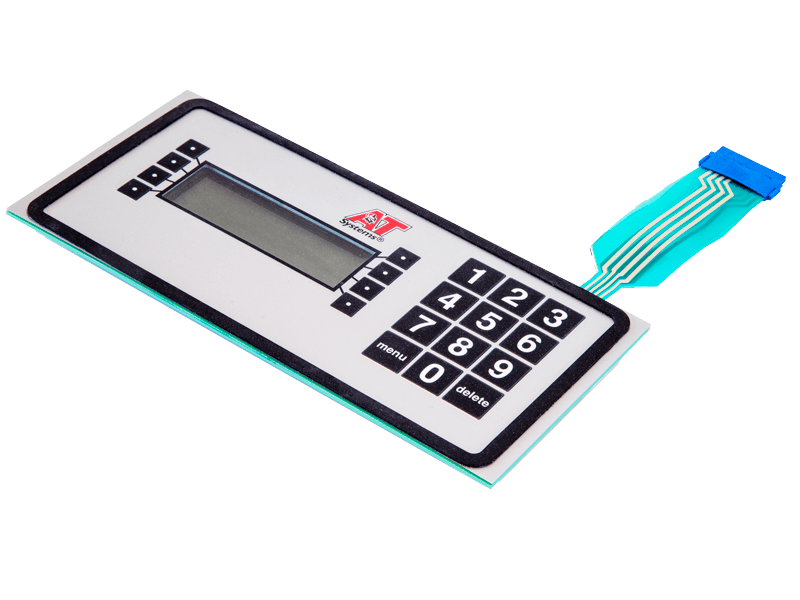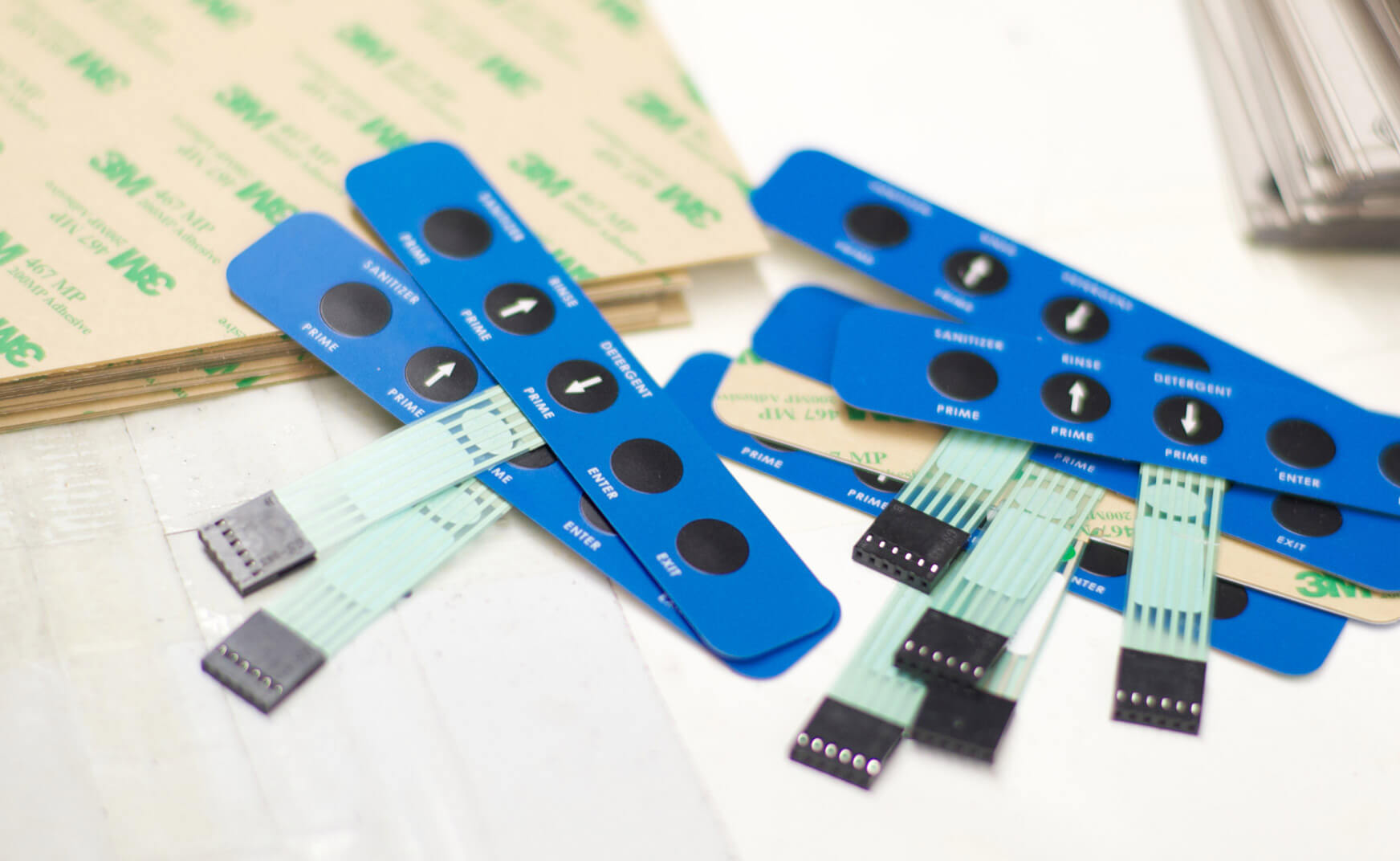Membrane Switch Manufacturer Serving Hospital and Military Industries
Just How Membrane Switch Innovation Functions and Its Role in Individual Interface Design
Membrane button innovation is a sophisticated method that integrates split products for touch-sensitive input. Its layout includes visuals overlays, conductive layers, and adhesive elements that engage when pushed. This communication not just finishes an electrical circuit yet also affects the general user experience. Comprehending the details of this innovation exposes its substantial influence on interface style, prompting concerns regarding its applications and future advancements in various sectors.
Understanding Membrane Switch Innovation
Membrane button innovation offers as a pivotal element in modern-day interface layout. This technology integrates graphic overlays, touch-sensitive membranes, and circuit layers to create a small, reliable input method for different devices. The layout generally includes several layers, including a published graphic layer that permits users to interact with the device with responsive responses. Membrane buttons are recognized for their resilience, resistance to wetness, and ease of cleansing, making them appropriate for environments where conventional mechanical switches may fail. Their low-profile layout makes it possible for smooth assimilation into tools, adding to a streamlined appearance. Furthermore, Membrane switches can be customized with various colors, textures, and symbols, enhancing individual experience and visual allure. This flexibility makes them preferred in customer electronic devices, clinical tools, and commercial controls, where instinctive communication is essential. In general, Membrane button innovation stands for a significant innovation in just how individuals involve with electronic interfaces.
Secret Elements of Membrane Switches
Membrane switches are composed of numerous vital parts that add to their performance and layout. The conductive layer products, glue and support layers, and graphic overlay layout each play a crucial duty in ensuring perfect efficiency and customer communication. Comprehending these components is crucial for efficient individual interface style.
Conductive Layer Materials
Conductive layer products play an important duty in the capability and reliability of Membrane switches. When stress is used to the button, these products are accountable for completing electrical circuits. Typically, a combination of conductive inks, such as silver or carbon, is utilized to create these layers. Silver conductive ink is favored for its superior conductivity and sturdiness, while carbon ink is typically utilized for cost-effective applications. The option of material influences not only the electric efficiency however likewise the total life expectancy of the switch. Additionally, the density and composition of conductive layers can influence responsive feedback and switch actuation. Choosing the proper conductive material is crucial for making certain suitable performance in varied customer interface applications.
Glue and Support Layers
Adhesive and support layers are crucial elements that add to the structural stability and performance of Membrane switches. These layers offer a durable structure, making certain that the numerous elements of the Membrane button remain securely bound and effectively lined up throughout their functional life. The glue layer assists in the attachment of the switch to the underlying surface area, offering toughness versus environmental aspects such as moisture, temperature variations, and mechanical anxiety. Assistance layers improve the button's rigidity, stopping contortion throughout usage and adding to a constant responsive feedback. With each other, these components play a crucial role in maintaining the performance and durability of Membrane buttons, inevitably influencing the overall individual experience in user interface style.
Graphic Overlay Layout
Although often neglected, visuals overlay layout plays an essential role in the functionality and looks of Membrane buttons. This layout mainly functions as the user interface in between the customer and the electronics, supplying both aesthetic appeal and functional quality. Reliable graphic overlays use shade, typography, and icons to direct users in steering controls and understanding gadget functions. The choice of materials effects longevity and responsive comments, guaranteeing the overlay endures wear while preserving a positive user experience. Furthermore, precise positioning of the overlay with the underlying components is important for optimal performance. To conclude, thoughtful graphic overlay design boosts usability, adds to brand name identity, and eventually affects customer complete satisfaction in tools utilizing Membrane switch innovation.
The Production Process of Membrane Switches Over
The production procedure of Membrane switches over involves numerous vital actions that assure performance and toughness. Originally, a visuals overlay is designed, integrating customer interface components and branding. This overlay is published onto a versatile substratum, generally polyester or polycarbonate, utilizing precision printing techniques to determine quality and shade accuracy.Next, glue layers are used, followed by the combination of conductive traces, usually made from silver or carbon, which are vital for electric connectivity. These traces are etched or screen-printed onto a different layer. Hereafter, a spacer layer is included in produce the essential gap between the overlay and the circuit layer, enabling tactile comments when activated.Finally, the components are assembled and checked for quality control, guaranteeing that each Membrane button fulfills the required specs for efficiency and dependability. This meticulous process results in a robust product matched for different applications in interface layout.
Advantages of Using Membrane Switches

Membrane changes offer various benefits that make them a preferred option in interface layout. One significant advantage is their portable and light-weight nature, permitting for structured styles in numerous applications. Additionally, Membrane switches offer a sealed user interface, shielding versus dust, dampness, and impurities, which boosts resilience and integrity. They are additionally very personalized, allowing developers to produce one-of-a-kind graphics and layouts tailored to particular customer needs.Another benefit is their cost-effectiveness, as they generally call for much less material and labor compared to typical buttons. The responsive comments of Membrane switches can be crafted to enhance customer experience, using a satisfying action without the mass of mechanical elements. In addition, Membrane switches can be conveniently incorporated right into varied settings, such as clinical devices, industrial tools, and consumer electronic devices. On the whole, these advantages emphasize the growing appeal of Membrane buttons in modern interface style.
Applications in Different Industries
Widely used across various sectors, Membrane switch technology has actually found its location in applications ranging from special info medical tools to customer electronic devices. In the medical care industry, these switches are indispensable to devices such as analysis equipment and individual tracking systems, supplying resilient, easy-to-clean user interfaces that endure sterilization processes. The auto industry uses Membrane buttons in dashboards and control panels, providing reliable operation in tough environments.Consumer electronics, consisting of home devices and pc gaming consoles, benefit from the streamlined layout and customizability of Membrane switches, improving customer communication. Additionally, commercial machinery utilizes these buttons for control board, ensuring resistance to dust and dampness while keeping functionality.Moreover, the aerospace and armed forces industries utilize Membrane buttons for sturdy applications, where reliability and performance are important. Overall, Membrane button innovation serves varied markets by combining capability, toughness, and aesthetic charm, making it a flexible option for contemporary interface.

Designing Interface With Membrane Switches Over
When next page creating user interfaces with Membrane buttons, careful factor to consider of both capability and appearance is essential. Membrane changes offer a streamlined, inconspicuous design that can enhance visual appeal while preserving usability. Designers have to focus on button layout, ensuring intuitive positioning for convenience of procedure. The responsive comments supplied by the Membrane switch is crucial; it can impact customer complete satisfaction and overall experience.Additionally, color and visuals components ought to line up with the brand name identification, strengthening acknowledgment and familiarity. Selecting long lasting materials that stand up to deterioration is additionally crucial, as longevity adds to usability with time. Integrating backlighting can enhance presence in different illumination conditions, better enhancing user communication. Ultimately, a properly designed Membrane switch user interface balances both kind and function, guaranteeing that the customer experience is both reliable and interesting, meeting the demands of varied applications throughout industries.
Future Patterns in Membrane Switch Innovation
As Membrane switch innovation advances, the integration of clever functionalities is coming to be increasingly noticeable. These innovations enable boosted interactivity and connection within individual interfaces (membrane switch manufacturer). In addition, the shift in the direction of environmentally friendly products mirrors an expanding commitment to sustainability in layout methods
Smart Membrane Changes

Eco-Friendly Materials Use
Amidst the developments in Membrane switch technology, a significant fad is emerging in the direction of using green materials. Makers are significantly focusing on sustainability by including biodegradable plastics and non-toxic inks, decreasing ecological influence. This shift not only straightens with worldwide environmental standards but likewise addresses customer need for greener products. Innovations in product science have allowed the development of long lasting, environment-friendly alternatives that preserve performance without endangering high quality. These materials use similar capability to conventional alternatives while reducing waste and poisoning. As industries end up being much more eco-conscious, the combination of sustainable techniques in Membrane switch manufacturing is expected to rise, reinforcing a dedication to environmental duty and leading the way for more sustainable interface solutions in the future.
Often Asked Questions
Just How Do Membrane Switches Differ From Typical Mechanical Switches?
Membrane changes differ from typical mechanical buttons mostly in building and construction and procedure. They make use of adaptable layers that produce a sealed interface, whereas mechanical buttons rely upon physical motion and call, causing unique durability and responsive responses attributes.
Can Membrane Switches Over Be Customized for Specific Applications?
Membrane switches can indeed be tailored for details applications - membrane switch manufacturer. Suppliers develop them to satisfy distinct requirements, allowing for tailored designs, graphics, and capabilities that enhance customer communication and fit certain operational requirements efficiently
What Is the Life expectancy of a Membrane Layer Switch?
The lifespan of a membrane button typically varies from 1 to 5 million actuations, depending on elements such as material top quality, environmental conditions, and usage regularity. Normal screening can aid determine its durability and dependability in applications.
Are Membrane Switches Water Resistant or Resistant to Chemicals?
Membrane buttons can be created to be water resistant and resistant to chemicals, depending upon the materials used and manufacturing procedures. Appropriate sealing and safety coatings enhance their sturdiness in different ecological problems and applications.
How Do Membrane Changes Impact Device Power Usage?
Membrane buttons can considerably influence tool energy consumption by guaranteeing reliable procedure. Their low power requirements throughout activation assistance lessen energy use, adding to longer battery life and total improved performance in digital tools. Membrane switches are understood for their durability, resistance to dampness, and simplicity of cleansing, making them suitable for environments where traditional mechanical buttons may fail. The auto market uses Membrane Extra resources switches in dashboards and control panels, giving trustworthy operation in difficult environments.Consumer electronic devices, including home devices and pc gaming consoles, benefit from the sleek style and customizability of Membrane switches, enhancing individual interaction. Additionally, industrial machinery utilizes these buttons for control panels, making sure resistance to dirt and dampness while maintaining functionality.Moreover, the aerospace and military fields use Membrane buttons for tough applications, where reliability and performance are crucial. The evolution of Membrane button innovation is entering an amazing stage with the introduction of clever Membrane buttons, which incorporate advanced features and capabilities. Membrane switches over differ from typical mechanical switches mainly in construction and operation.